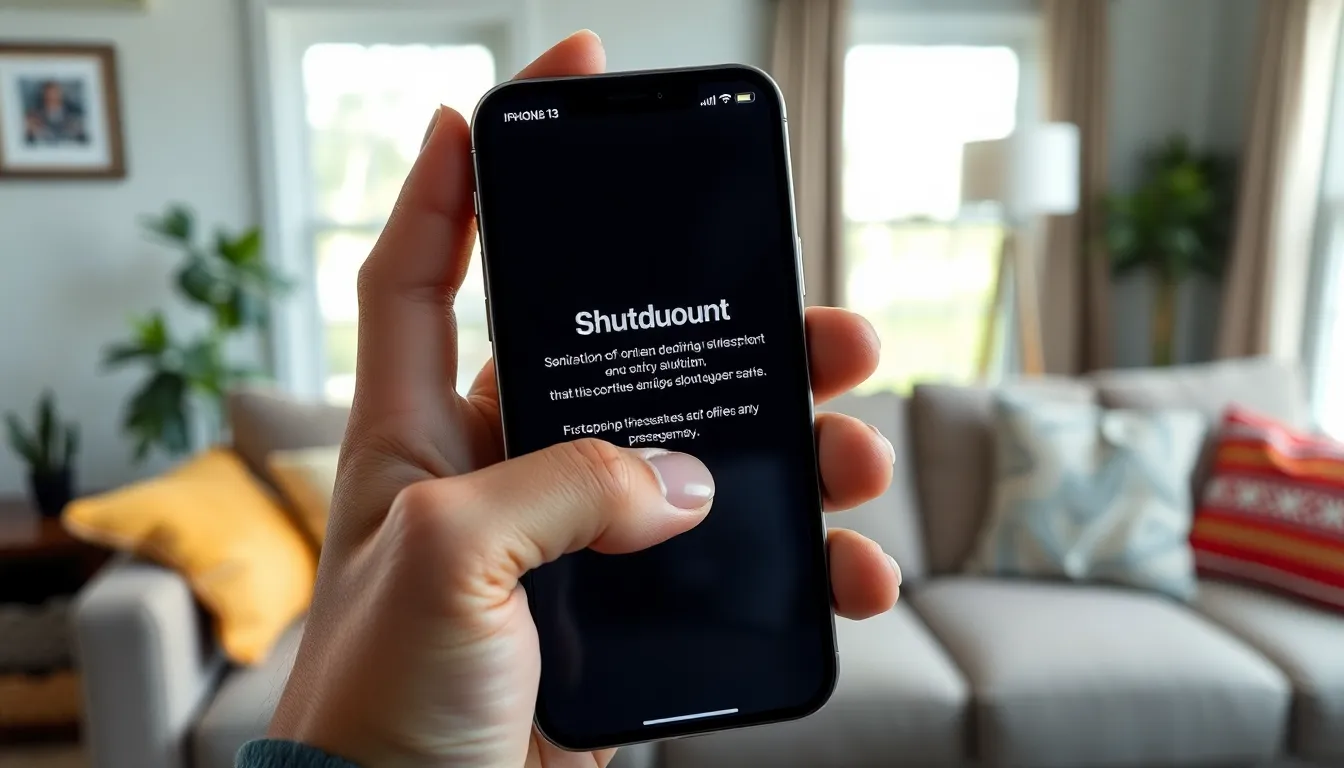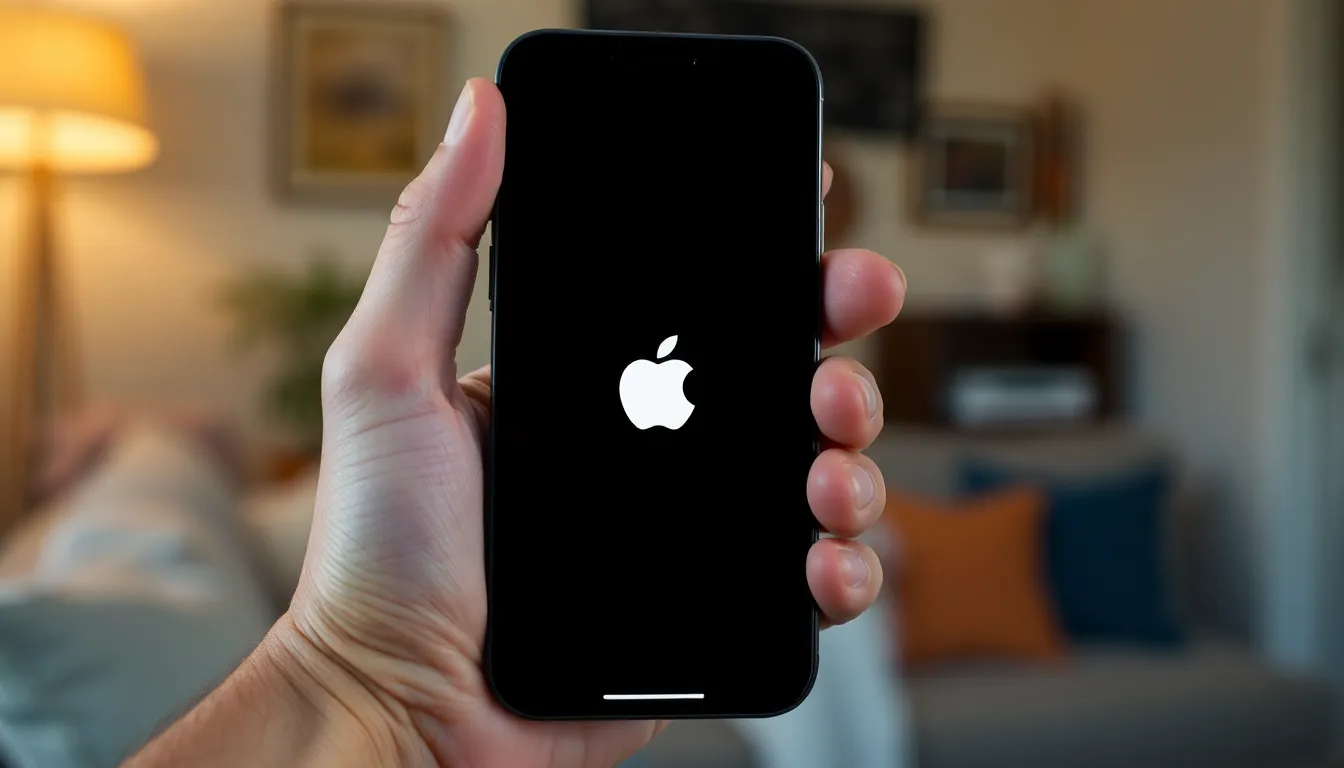Ever found yourself in a showdown with your iPhone 13? Maybe it’s frozen like a deer in headlights or just refuses to cooperate. It’s frustrating, right? But fear not, there’s a way to regain control without resorting to dramatic measures like a tech exorcism.
Table of Contents
ToggleUnderstanding the Need to Force Turn Off iPhone 13
Frustration arises when an iPhone 13 freezes or becomes unresponsive. Users often encounter this issue during critical moments, which can lead to anxiety over lost data or missed communications. In such situations, knowing how to force turn off the device provides a quick remedy.
Forcing the phone to shut down helps restore functionality without losing essential information. Symptoms like unresponsive apps, a frozen screen, or overheating make it necessary to perform this action. The process allows users to regain control of their phone with minimal effort.
When an app crashes frequently or the system lags, using the force shutdown method can resolve these problems efficiently. Users might also find this technique helpful if the iPhone 13 doesn’t respond to regular shutdown commands.
Technical difficulties often trigger the need for a forced restart, highlighting the importance of this knowledge for iPhone 13 users. Being familiar with the steps can expedite troubleshooting efforts and minimize downtime. Overall, understanding when and how to force turn off the iPhone 13 equips users with a valuable tool for maintaining their device’s performance.
Step-by-Step Process to Force Turn Off iPhone 13

Forcing a shutdown on the iPhone 13 involves simple steps that restore functionality during unresponsive situations. Knowing these methods can help users regain control quickly.
Using Physical Buttons
Press and quickly release the Volume Up button. Next, press and quickly release the Volume Down button. After that, press and hold the Side button until the Apple logo appears on the screen. This process usually takes about 10 seconds. It’s effective for addressing any freezing or unresponsiveness.
Alternate Methods
Another option involves using the Settings app. Navigate to Settings and tap on General. Scroll down and select Shut Down. This method provides a standard way to turn off the device without forcing a shutdown through physical buttons. If the screen remains unresponsive, users can try connecting the phone to a charger. Sometimes, a low battery triggers unresponsiveness.
Troubleshooting Common Issues
When users encounter issues with their iPhone 13, several troubleshooting steps can help. Understanding common problems facilitates effective solutions.
Device Not Responding
A device that isn’t responding can lead to frustration. It’s essential to rule out simple causes like low battery levels. When the iPhone freezes, users can try connecting it to a charger, as low power often leads to unresponsiveness. Additionally, performing a force restart often resolves issues. This sequence includes pressing the Volume Up button followed by the Volume Down button, and then holding the Side button until the restart occurs. Each of these steps works to regain control of the device efficiently.
Button Malfunctions
Sometimes, the buttons on the iPhone 13 may not respond appropriately. Physical damage or accumulation of debris could render buttons ineffective. Regular checks for dirt and debris around the buttons help maintain functionality. If a button malfunction occurs, users can still attempt the force restart method, as it relies on multiple buttons working in conjunction. In cases where button responsiveness doesn’t improve, seeking professional help ensures that any underlying hardware issues are addressed promptly.
Tips for Preventing iPhone 13 Shutdown Issues
Maintaining the iPhone 13 can prevent unexpected shutdowns. Regular software updates ensure the device operates on the latest features and bug fixes, which can enhance overall performance.
Battery care plays a crucial role; keeping the battery charged above 20% significantly minimizes risks of unresponsiveness. High-quality charging cables and adapters also support battery health, reducing wear and tear over time.
Avoiding extreme temperatures is essential for device stability. Excessive heat or cold can lead to unexpected shutdowns, so storing the iPhone in moderate conditions is vital.
Monitoring app behavior helps users identify problematic applications. If certain apps consistently cause issues, removing or reinstalling them can restore smooth functionality.
Managing background processes contributes to better performance. Limiting apps that run in the background can alleviate strain on system resources, promoting a stable user experience.
Backing up data regularly protects against data loss during unexpected shutdowns. Utilizing iCloud or iTunes ensures important files remain safe, allowing for quick recovery when necessary.
Lastly, cleaning the device and maintaining the buttons can prevent hardware malfunctions. Keeping ports free from debris supports better connectivity and responsiveness, promoting a longer lifespan for the device.
Following these preventive measures equips users with tools to enhance the reliability of their iPhone 13, making it less prone to shutdown issues.
Knowing how to force turn off the iPhone 13 is a crucial skill for any user. This method not only helps regain control during frustrating moments but also ensures that vital data remains intact. By following the simple button sequence or using the Settings app, users can quickly troubleshoot and resolve issues that may arise.
Regular maintenance and awareness of potential problems can further enhance the device’s performance and longevity. Keeping the software updated and managing battery health are essential steps in preventing unresponsiveness. With these strategies in hand, users can confidently navigate any challenges their iPhone 13 may present.




